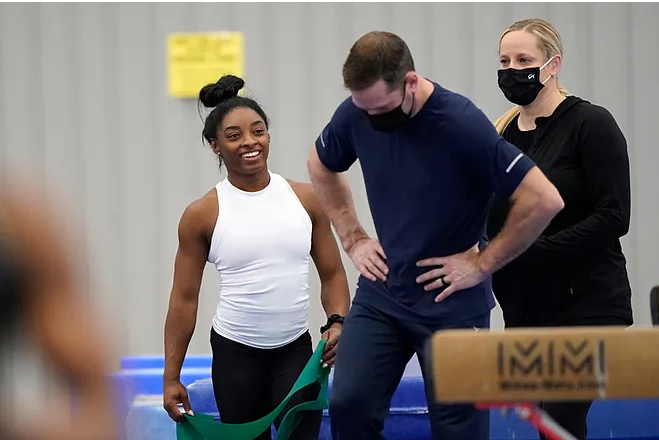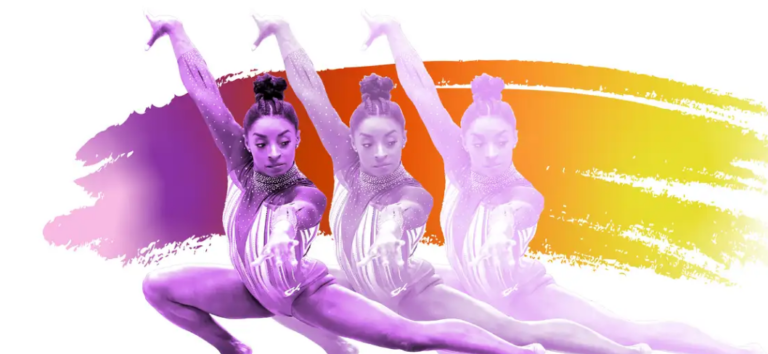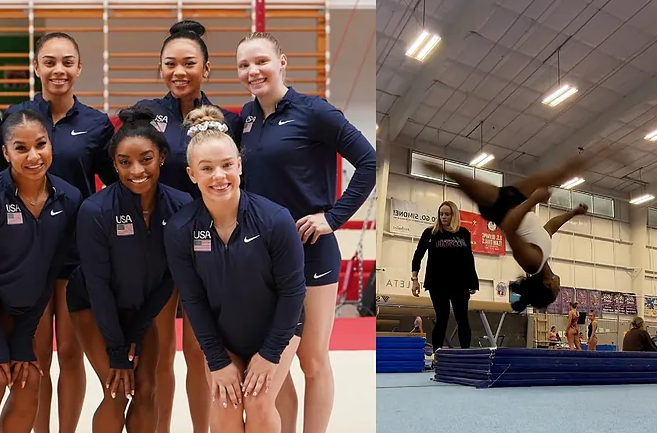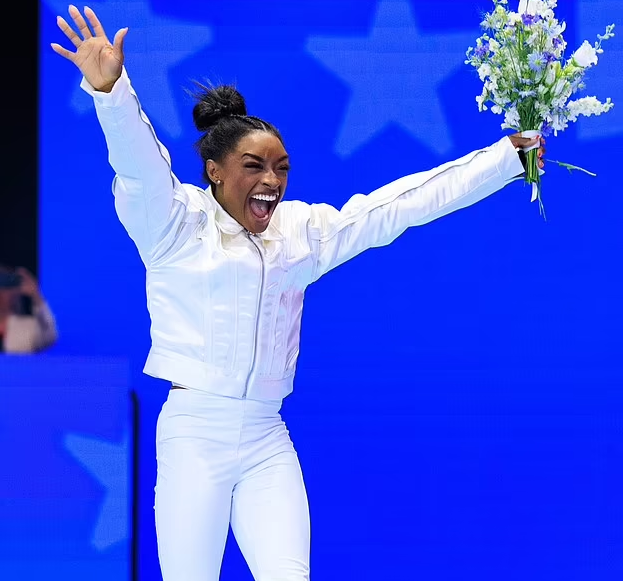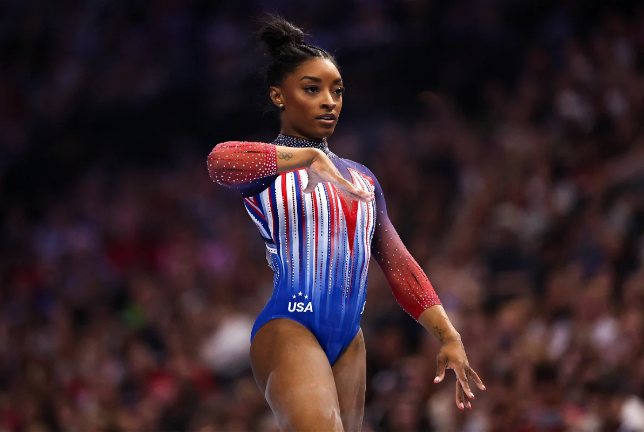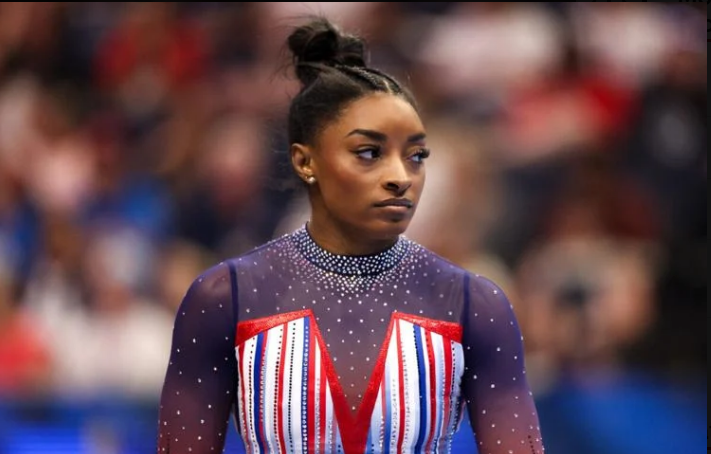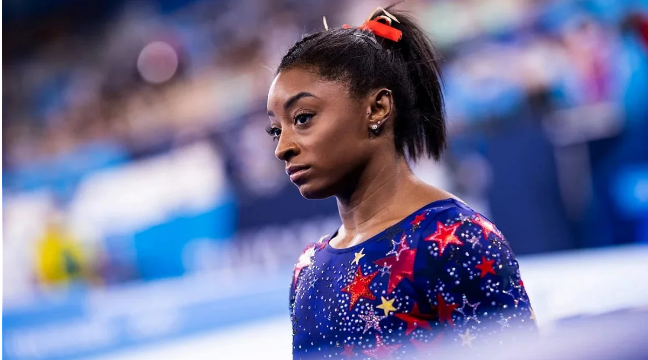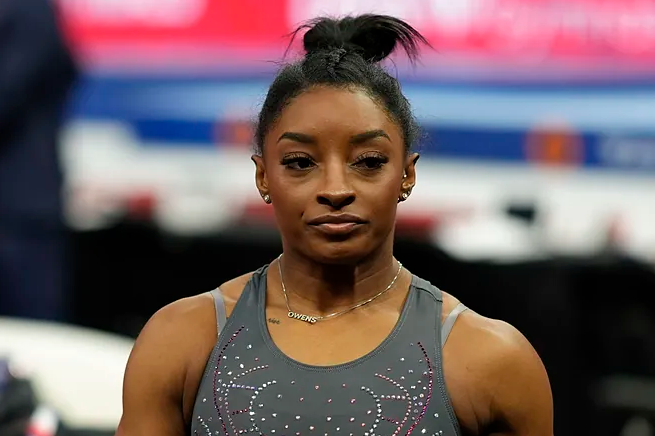Cecile Canqueteau-Landi fit “in the box,” as she put it. She was skinny. She was blonde. She was pretty good at gymnastics.
And so at 9 years old, she was whisked away to become part of the French national team program, a path that ultimately led her to the 1996 Olympics.
There was reward in that journey. Yet looking back nearly three decades later, Landi wonders how many promising young athletes had their careers and their lives altered – and not for the better – because they didn’t fit someone’s preconceived notion of what a gymnast needed to look like by the time they reached their 10th birthday.
When Landi transitioned into coaching in the early 2000s, she vowed not to make the same mistake.
So maybe it’s not a coincidence that when Landi and her husband Laurent – himself a former French national team member – walk onto the floor at Bercy Arena for women’s Olympics qualifying next Sunday, they will do it while leading the oldest U.S. women’s gymnastics team – headlined by 27-year-old Simone Biles – the Americans have ever sent to a modern Games.
A healthy partnership
In another country in another era, maybe Biles becomes something other than an icon. Maybe she becomes a casualty.
“An athlete like Simone would never have reached her full potential in France,” said Cecile. “Because she would have been put aside because she didn’t fit that box.”
For the Landis – who began coaching Biles in 2017 – there is no “box.” There can’t be.
“It’s not the athlete that needs to adjust to the coaches,” Laurent Landi said. “The coaches need to adjust the athletes and the athlete’s abilities.”
Biles was already 20 and the reigning Olympic champion when the Landis agreed to helm the elite program at World Champions Centre, the massive gym run by the Biles family in the Houston suburbs.
They knew Biles fairly well at the time having already coached gymnasts who competed alongside Biles at several world championships and the 2016 Olympics. During the interview process, all three agreed there was no point – and no fun – in having Biles merely try to hold on to her otherworldly talent. To keep her engaged, they needed to make sure she kept moving forward.
The result has been perhaps the best gymnastics of Biles’ remarkable career, a stretch that includes three world all-around titles and another handful of entries in the sport’s Code of Points with her next name next to them, from the triple-double on floor exercise to the Yurchenko double pike vault that drew a standing ovation at the Olympic trials last month.
Biles views her relationship with the Landis as more of a partnership.
“They’ve been big mentors in like my adulthood (because) they got to see and harness the more mature Simone,” Biles said. “They’ve helped me a lot not just in the gym but out of the gym too.”
When Biles moved into her first house, Cecile who came over and showed her how to operate the dishwasher. When a gymnast who had just gotten their driver’s license had a problem with one of her tires, Cecile went to a nearby gas station and gave a tutorial on how to use the air pump.
“If we can help and they want the help, then why not?” she said with a laugh.
Changing with the times
The trick is finding a way to provide that help safely and productively, particularly amid a culture shift in the sport aimed at empowering athletes to take ownership of their gymnastics. It is a delicate needle to thread. What serves as motivation for one athlete could be construed negatively by another.
It’s a reality the Landis are well aware of as they try to find the proper balance between being too rigid and too lax. They grew up in a time when the coach/athlete relationship was one-sided. There was no back and forth. There was no discussion. The coach set the standards and expectations. The athlete met them or they didn’t last long.
The shift toward a more cooperative approach was overdue, but that doesn’t mean it is always easy. Laurent Landi admits he’s not the most patient coach, though those around him say he has mellowed a bit over the years. He also understands if he wants to keep doing this for a living, he didn’t have much of a choice.
“Yeah, there will be frustration,” he said. “But you can always go around some stuff and just take your pride (as a coach) away and make sure that the athletes still get the skill done.”
It’s an approach that helped World Champion Centre’s elite program send five athletes to the Olympic trials, with Biles and Jordan Chiles making the five-woman U.S. team while Joscelyn Roberson and Tiana Sumanasekera were selected as alternates.
It’s the kind of success Roberson envisioned when she moved to the Houston suburbs a few years ago to train under the Landis. She was intimidated at first before realizing her new coaches “have a million different ways to coach one skill,” a marked departure from what she was used to.
“We’re not always right,” Laurent said. “If you do your own way all the time, you will hurt the majority of the athletes. Maybe one will survive and will be an amazing person, amazing athlete but the (other) 90 percent, they will be broken. … We had to adjust to Simone, otherwise we would have broke her.”
It’s not just Biles’ age they had to accommodate, but her schedule. She is no longer a precocious teenager who buries herself in the gym. She’s a newlywed whose schedule is packed with everything from corporate commitments to building a house and a family with her husband, Chicago Bears safety Jonathan Owens.
“When (we) tell him he just hears ‘you’re missing practice’ and kind of freaks out,” Biles said. “Because he sees all the end goals and then he gets the calendar and then he’s like, ‘Oh, OK, that’s fine. We’ll do this today, we’ll do that.’ So it just takes time for him to process.”
Biles certainly appears well-prepared. She arrives in Paris at the height of her powers more than a decade after ascending to the top of her sport. She’ll be accompanied by a pair of coaches who view the trip as more of a business trip than a homecoming.
A new challenge awaits
While the Landis have been approached to take over the women’s national team program in France in recent years, returning never made much sense to them even with the women’s program is in the midst of a resurgence.
“I think our family will be very proud, probably more than we are,” Cecile Landi said. “Because in a weird way, it’s just work for us.”
And perhaps, goodbye too.
Cecile, long a supporter of NCAA gymnastics, earlier this year agreed to become the co-head coach at the University of Georgia. Laurent will remain at World Champions Centre in the short term until the Landis’ daughter Juliette – who will dive for France during the Games – graduates from high school next spring.
After that, who knows? The young gymnast who was put in a box has become a coach who no longer puts limitations on anyone, herself maybe most of all.
“I think I’ve done everything I could do in elite, and beyond what I could ever have imagined as a little French girl in a little town,” Cecile said. “I’ve coached the greatest of all time. I’ve coached many kids. I’ve had many great athletes in NCAA and elite that I feel like I want to try what’s next, a new challenge.”
